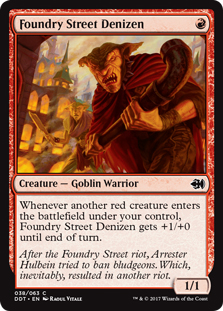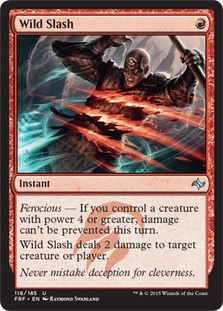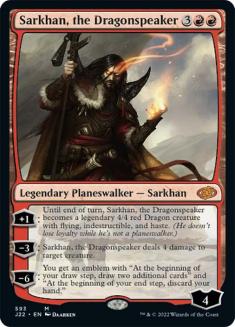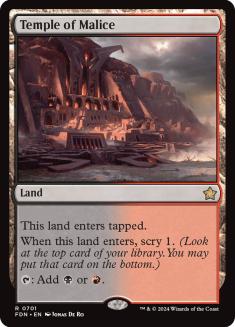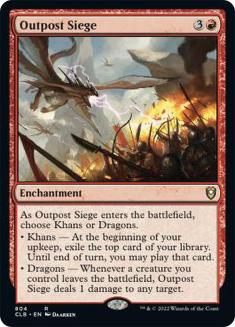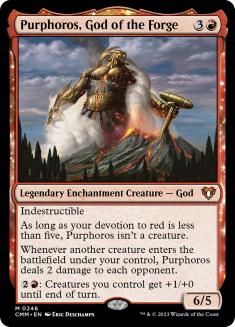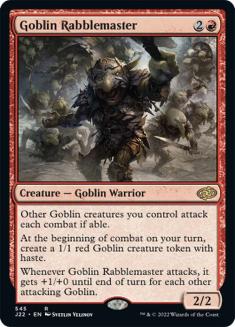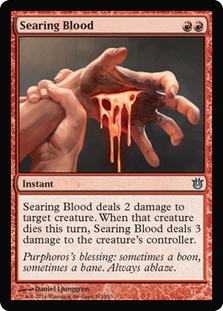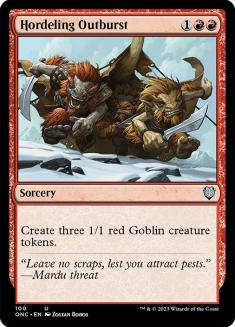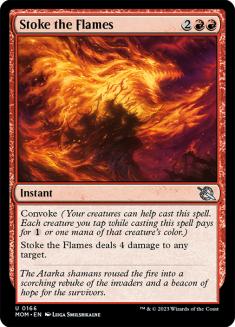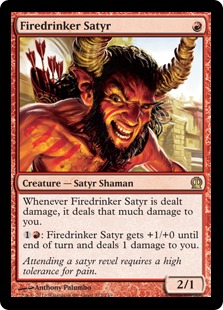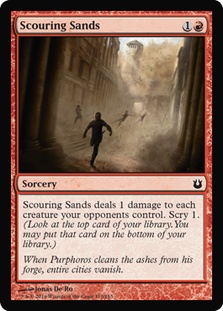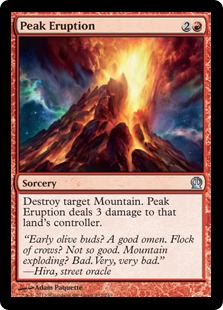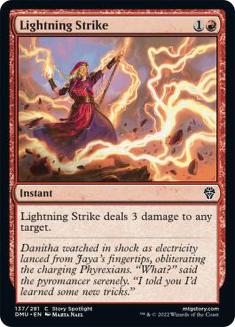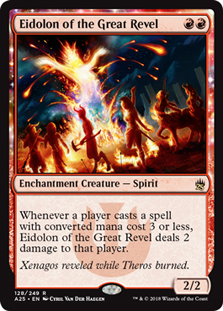Mono-Red Aggro has always and will always be a mainstay contender in a given format. The speed and direct nature of the archetype has proven to be a solid
strategy in the past, and the pieces for a good Mono-Red Aggro deck tend to be present across formats. Every now and then, a format will evolve to a point
where people are “out metagaming each other” or otherwise going over the top of one another, and Mono-Red Aggro makes an appearance to give everybody a
dose of reality and keep the sideboards honest again with lifegain and small creature sweepers like Drown in Sorrow.
Mono-Red came close to having a big finish at the Open Series in Washington DC in the hands of Seth Giurato, who after round 10 was the lone undefeated
player left in the tournament. Players weren’t prepared to face the archetype, weren’t entirely sure what his deck was capable of, and they had no idea
which cards Seth was playing. As we’ve come to find out, Mono-Red tends to have enough cards in the format for people to have their choice of builds.
Seth’s bigger token version caught plenty of players off guard and looks like it still has the chops to solid aggressive option in Standard.
I really like how this build of Mono-Red has both consistency and power. As opposed to a one-drop-centric build like Boss Sligh, Seth’s deck is more
focused on complementing its fast starts with three-drops like Hordeling Outburst and Goblin Rabblemaster. The swarm of tokens works very well with Stoke
the Flames as a very cheap four-damage spell and helps to prevent suicidal Goblins from chump attacking when you have Goblin Rabblemaster in play. Given
the way that the opponent is likely to lose in game 1 (getting run over by tokens and burn), when they move to sideboarding, it is quite likely that they
will bring in things to handle smaller creatures. This gives Seth a huge advantage, as he’s able to sideboard into a bigger red deck with Sarkhan, the
Dragonspeaker, leaving cards like Drown in Sorrow and Magma Spray as mediocre draws.
Searing Blood is also a big reason to favor Mono-Red over a two-color build, as multicolor decks can’t reasonably cast the RR spell. In tandem with Wild
Slash and Lightning Strike, you can kill Courser of Kruphix and Siege Rhino respectively, paving the way for your early creatures. However, other than
Fleecemane Lion, there aren’t many creatures with exactly three toughness to be concerned with, so I’d like to see the numbers of those lowered.
Seth uses Chandra, Pyromaster to top off his maindeck, but I’d prefer to have Outpost Siege in that slot. Outpost Siege is likely the most powerful of the
cycle from Fate Reforged and its strength has already been seen in a number of R/W Aggro builds, including Mark Nestico’s PTQ winning list and Luis
Salvatto’s Super Sunday Series-winning R/W Aggro build featuring Outpost Siege out of the sideboard to great effect.
Creatures (17)
- 4 Stormbreath Dragon
- 4 Goblin Rabblemaster
- 2 Ashcloud Phoenix
- 4 Seeker of the Way
- 2 Monastery Mentor
- 1 Soulfire Grand Master
Lands (24)
Spells (19)

Creatures (17)
- 4 Stormbreath Dragon
- 3 Brimaz, King of Oreskos
- 4 Goblin Rabblemaster
- 2 Ashcloud Phoenix
- 4 Seeker of the Way
Planeswalkers (2)
Lands (24)
Spells (17)
Sideboard

Moving forward, this is the Mono-Red “tokens” build that I like best.
R/W Aggro has been having good success, and this build takes some important concepts from it, namely the Outpost Sieges and the sideboard Peak Eruptions.
If R/W Aggro and other decks are using Chained to the Rocks as their payoff removal spell, Peak Eruption becomes a virtual three-for-one, destroying their
mana source, returning your creature, and dealing three damage. You’re hard pressed to get a better rate than that, especially considering the fact that
Mono-Red is known for throwing away cards from time to time in hopes of closing out the game early. Any time you get a two-for-one playing a deck like
this, it feels like Christmas has come early.
Madru Scout is a solid two-drop, but its dash is pretty much with Outpost Siege on dragons. After sideboard, Scout combines well with Purphoros, God of the
Forge both to hit for two on each dash, but to also attack for a ton out of nowhere when you dash two of them, turning on Purphoros as well.
This is how I sideboard in the popular matchups:
VS Abzan Midrange
Out:
In:
After sideboarding, the matchup will slow down. Bile Blight and Drown in Sorrow will be their go-to cards, and you want to have staying power through their
sweepers. Sadly, this is one of your tougher matchups, as your burn spells don’t matchup all too well against their creature suite.
VS Abzan Aggro
Out:
In:
This Abzan build is much easier than its midrange cousin. Siege Rhino is still annoying, but that’s the case with any Abzan build. Casting Searing Blood on
Rakshasa Deathdealer, Heir of the Wilds, or anything smaller like Soldier of the Pantheon or Bloodsoaked Champion will be awesome. They also deal a
significant amount of damage to themselves with painlands and Mana Confluence, and although your creatures will be pound-for-pound weaker than theirs,
you’ll tend to be in great shape to race them.
VS W/U Heroic
Out:
In:
They’re fast, and Ordeal of Heliod sucks to play against. Their creatures get out of burn range quickly, so you sometimes need to save Wild Slashes to have
a big fight over one. This matchup is very play-draw dependent, and Goblin Rabblemaster will vary from being too slow to your best card. Keep an eye out to
use Wild Slash with ferocious to turn off protection from Gods Willing or the heroic ability of Favored Hoplite. This comes up on a Foundry Street Denizen
+ Hordeling Outburst turn on an attacking Goblin Rabblemaster.
VS R/W Aggro
Out:
In:
The player with the last creature in play will tend to win. You want to get your Firedinker Satyrs out of your deck after sideboard to avoid them getting
burned. They also match up extremely poorly against opposing tokens. Even though you’re sideboarding in more expensive spells and taking out a land, the
games will go longer, and flooding out will be the primary way to lose.
VS Jeskai Tokens
Out:
In:
Do a lot of trading and keep their creature count low to disable their huge Stoke the Flames, Jeskai Ascendancy, and Jeskai Charm turns. Your Goblin
Rabblemaster will be better than theirs, and you want to end the game before they can convert their card drawers like Treasure Cruise. Jeskai Tokens has a
lot of lands that enter the battlefield tapped, which is exactly what Mono-Red’s 22 Mountain manabase wants to play against.
VS G/B Constellation
Out:
In:
One matchup where neither mode of Outpost Siege is particularly effective. You have to go very low to the ground and kill them before they start deploying
their huge spells like Ugin, the Spirit Dragon and Hornet Queen. Sideboarding in Scouring Sands for just Hornet Queen tokens is largely a losing
proposition, and you’re better off trying to get them in burn range before that happens or attempting to power through it. Purphoros will become an
unkillable win condition if things are brought to a stalemate.
VS U/B Control
Out:
In:
They get a few tools to sweep your board, like Drown in Sorrow and Crux of Fate, but you’re so much faster than them it rarely matters. They’re often
creatureless, so your weaker burn spells are the first to go. Your deck has so few targets for Disdainful Stroke game 1, so you can expect them to side out
those counterspells for cheaper creature removal or Jorubai Murk Lurker. The Murk Lurker will be a road bump but not the end of the world. It will be tough
for them to beat any big resolved spells like Outpost Siege on Khans, and will nearly force a Perilous Vault by itself.
VS Sultai Control
Out:
In:
Very similar to straight U/B Control, and this sideboarding guide is going off of Gerard Fabiano’s Sultai winning list from SCG DC. They rely heavily on
Bile Blight, so try not to overcommit on goblin tokens at any point or double up on any particular creature without having to. After sideboard, they come
with a smattering of creatures, but they’re slow and not worth thinking about too much.
Conclusion
It looks like enough small creatures are going around to make Searing Blood and Wild Slash awesome burn spells, and enough slow decks for your own small
creatures to get underneath of to make Mono-Red a good choice in Standard right now. It’s also not making too much noise, and whenever there’s surprise
factor to be had, Mono-Red Aggro can blindside a tournament out of nowhere. If this weekend isn’t the time or place for it, remember to keep the idea of
Mono-Red Aggro shelved, as it’s always a dangerous threat in the right circumstances. Personally, if it wasn’t for Pro Tour Fate Reforged, I’d be playing
it in Regionals this weekend, since I’ve been meaning to dust off my red cards for a while now. This looks like it’d be a great chance to do so.
Best of luck to everyone playing it this weekend at Regionals!


